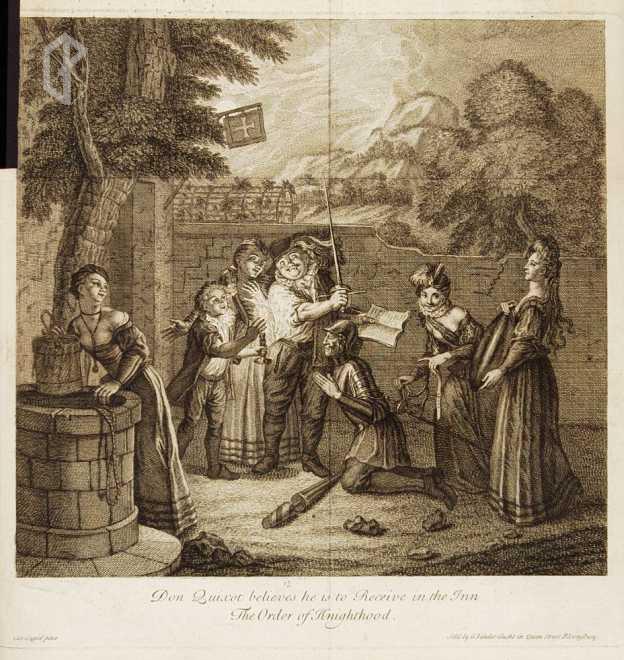
Doña Tolosa (figure of great beauty) holds don Quixote's sword and doña Molinera a shield (it should be the spurs. It also appears the boy with a candle.
The other two women (the one next to a well is remarkable), do not belong to Cervantes' text.
Drawing and engraving of excellent quality; female figures of great beauty; precise burin lines.
2 - From set "Sold by G. Vander Gucht in Queen Street Bloomsbury" (London, c. 1725 or later).
3 - Copy engraved by Gerard van der Gucht? after Coypel's illustration (Paris: Surugue, 1724); the composition has been turned in comparison with Coypel's, but they both have the same large horizontal format.
Charles-Antoine Coypel (Paris, 1694 - Paris, 1752): History and genre painter and engraver. Antoine Coypel's son. Due to his early interest in painting, he was 20 years old when he was accepted into the French "Académie". He made his debut as history painter, but he succeeded as genre painter. "Les jeux d'enfants", his canvases about "Don Quixote" and his illustrations for Molière's works must been highlighted. In 1772, after his father’s death, he inherited his posts as royal "directeur des tableaux" and Duke of Orleans' first painter. In 1747, he was appointed as first painter of the King and director of the Academy. He was also a great writer of several successful comedies and tragedies. As an engraver, he was charming, amusing and satirical. His works are in Besançon, Chartres, Fontainebleau, Nantes, Paris and Toulouse (Benezit III, 247-248).
Gerard van der Gucht (London, 1696 - London, 1776): Engraver and art dealer. Jan van der Gucht's brother and Louis Cheron's disciple. His father and master, Michael van der Gucht, engraved for London: Chiswell, 1700. He worked as engraver for several booksellers and for sir Hans Sloane. In Sloane's work "The Four Seasons", Gerard van der Gucht is mentioned after Coypel. He had thirty sons (Benezit V, 260-261).